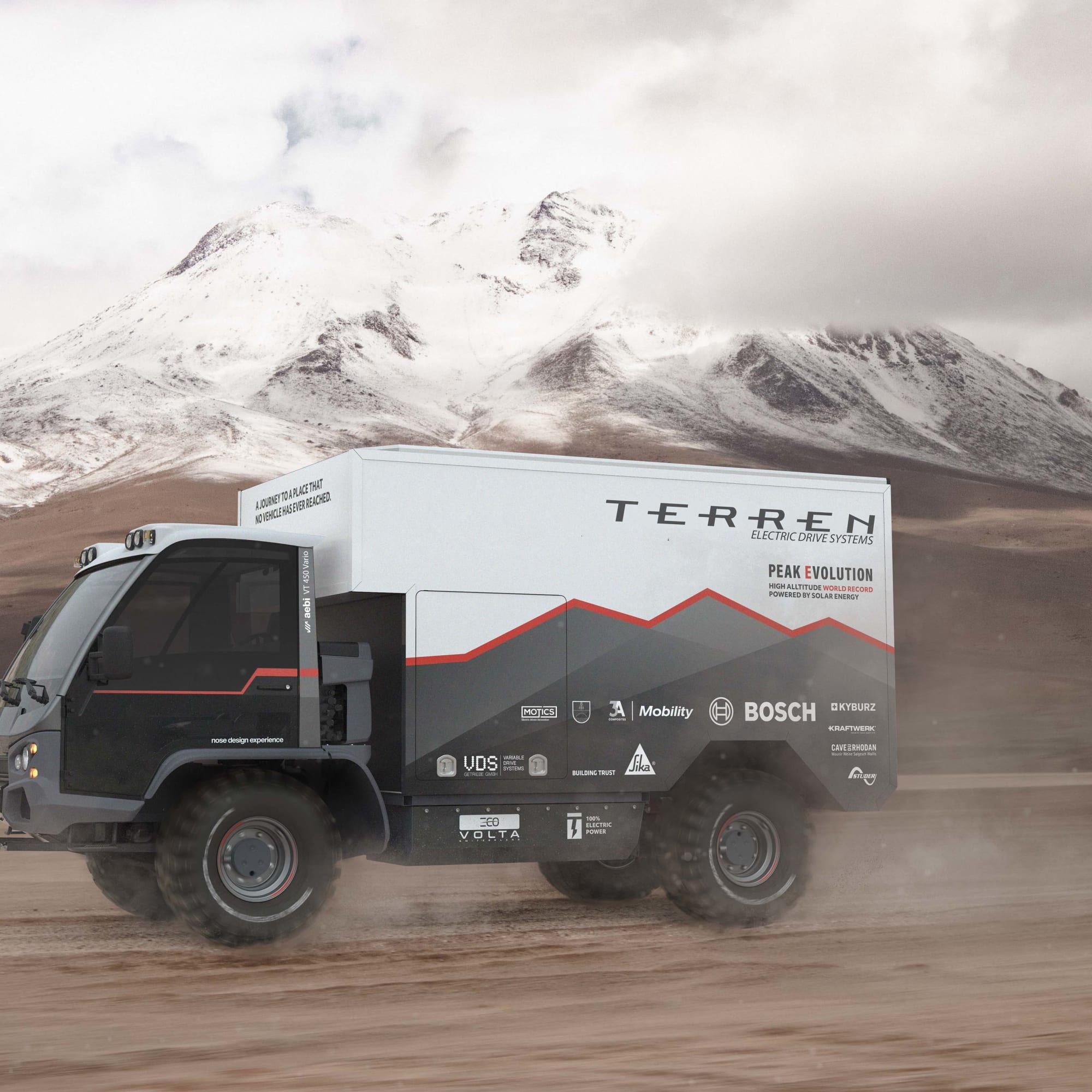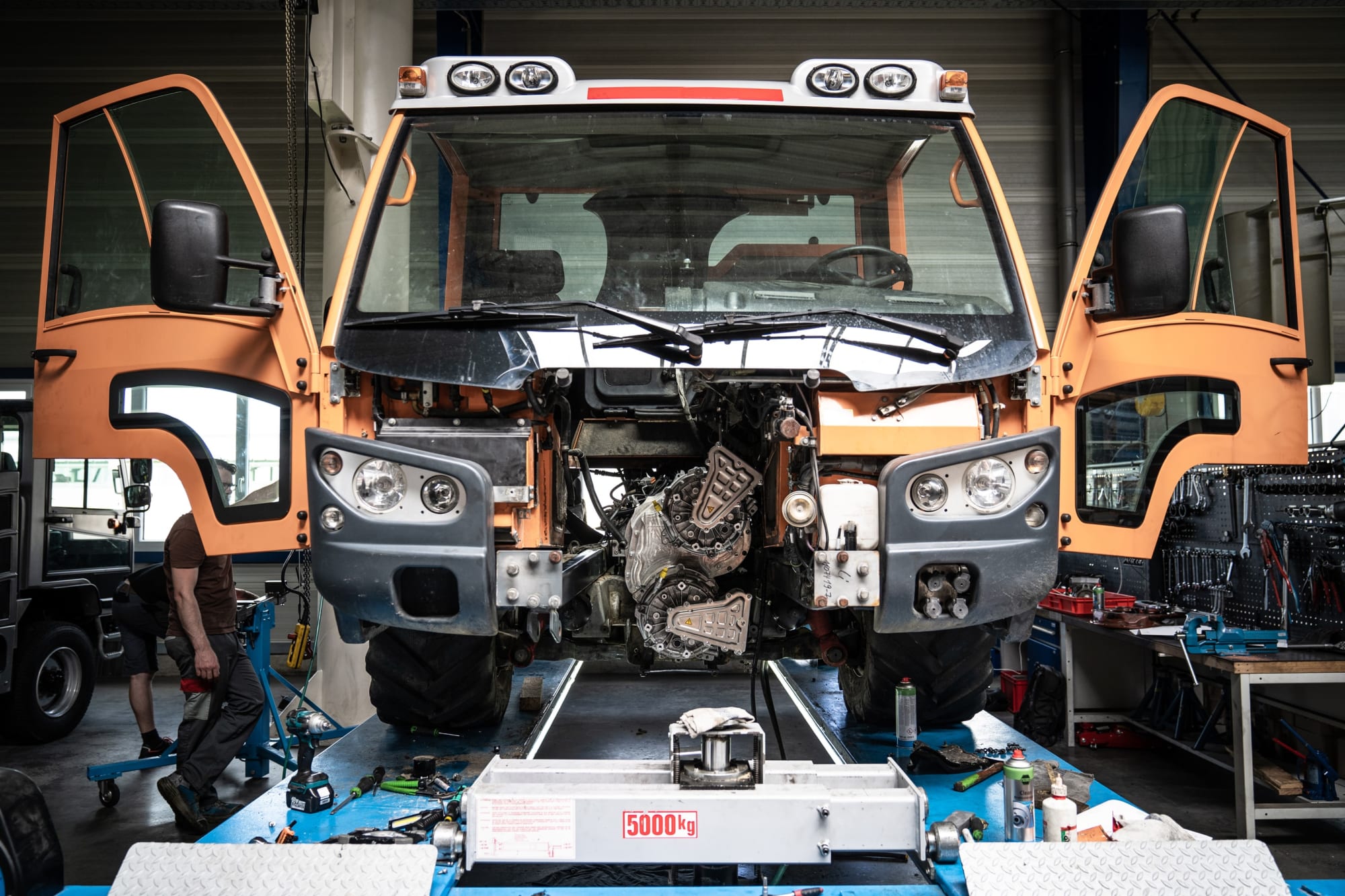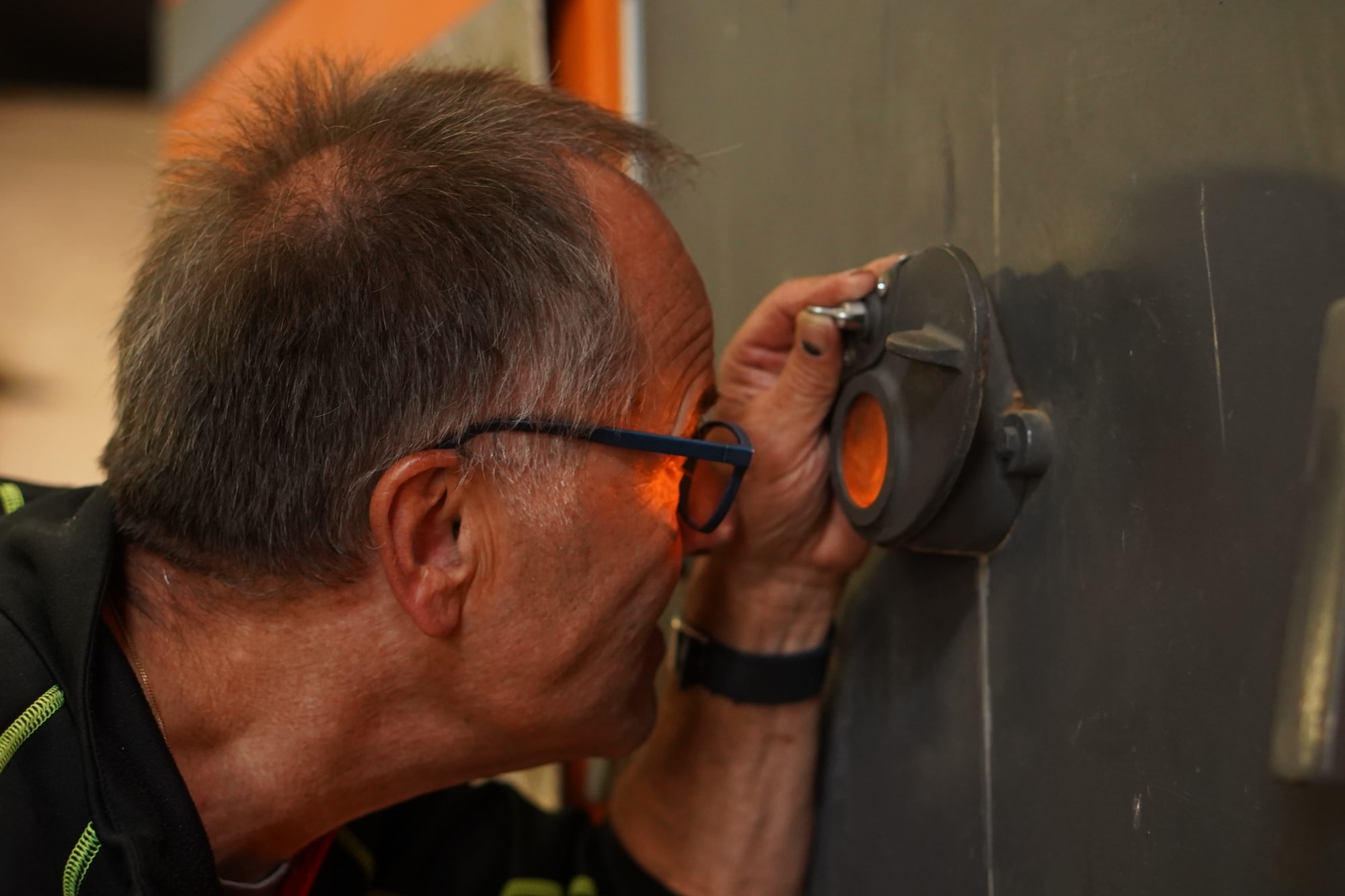Aiming high
Terren: The coolest electric all-terrain multi-purpose vehicle in the world.
What it's all about

And then a thunderstorm unexpectedly hits. In 20 minutes, they would reach the Monte Rosa hut at 2,883 meters above sea level. Lightning and thunder follow each other in such short intervals that the imminent danger takes your breath away. The mountain bikes, skis and camera equipment on their backs weigh heavily, the clothes stick to their bodies completely soaked. Then suddenly it appears from behind a rock: The rescuing, futuristic-looking crystal-like Monte Rosa hut.
This is just a short episode from an insane adventure that the two brothers David and Patrik Koller and their buddy David Pröschel undertook last summer together with two cameramen: They wanted to be the first people ever to climb the 4,554-high Signalkuppe peak in the Valais on their mountain bikes. In the end, only Patrik and one of the cameramen made it, but this expedition is a good example of how the three young friends work. No idea is too crazy, no plan too daring, there is no fear of failure.

From the buggy to the "Terren electric drive system"
.jpg)
As children they dammed streams and built huts, as teenagers they welded together gasoline-powered buggies, as adults the tinkerers now dream of the technical revolution. "Our goal is to develop electric mobility," says David Pröschel. "We thought about where the advantages of electromobility could be implemented best and fastest, and where the cost/benefit factor is balanced." The solution seemed to be to develop a slow vehicle (drag and noise factors) that could be in use for several hours a day (payback factor), not travel long distances (battery power factor) and be easily recharged. It became clear that an all-terrain multipurpose vehicle would combine all of these advantages. "If this were used in a mountainous region, we would also have the advantage that almost half of the energy could be recovered each time we drove downhill," Pröschel says. The idea of the "Terren electric drive system" was born. The novel electric drive system meets the special requirements of commercial vehicles. Both new and existing vehicles can be equipped with it.
Do it yourself
The three boys rented an old workshop building and built it out themselves, carpentered living space into it and installed a photovoltaic system on the roof. "We used solar cells that should have been disposed of because of a warranty issue," says David Pröschel. "They may not look as pretty, but they work perfectly well." So well, in fact, that they now don't have to pay for electricity and even receive money from the municipality because they produce excess power. Besides that, the project has made a big hole in the pioneers' pockets. "Together, we have invested about 100,000 francs so far, and we don't pay ourselves any wages," Pröschel says. Thanks to our partners, sponsors and a highly successful crowdfunding campaign, the prototype will soon be ready. It is based on an Aebi transporter and should be ready to run by spring. However, a few hundred thousand francs are still needed for further development to make it suitable for series production. The pioneers are still looking for additional sponsors and investors. This is one of the reasons why they launched an ingenious marketing ploy: a world record attempt.

Expedition to Chile
To generate attention, you need good storytelling. The three visionaries quickly realized this. And so they thought of a suitable setting to present the hero "Terren" in a worthy manner. And because they don't like to dream small, both Davids and Patrick are planning a major coup: before the end of the year, they want to put the "Terren" through its paces in Chile. The plan: to climb the highest volcano on earth and second highest peak in South America - the 6,893-meter-high Ojos del Salado. If successful, this would be the world altitude record for land vehicles!
However, there are still a few hurdles in the way of the three inventors. They now have to complete the complex interior work on the "Terren" and install the electronics and hydraulic system. After that, the entire software will have to be programmed as well.
But as the past years and especially the experience on the world record preparation tour last summer in the Valais mountains have shown: The three friends will also survive this trip unscathed despite thunder and lightning. And who knows - maybe they will even visit us in Gstaad with their prototype before their adventure in Chile...?!
.jpg)


